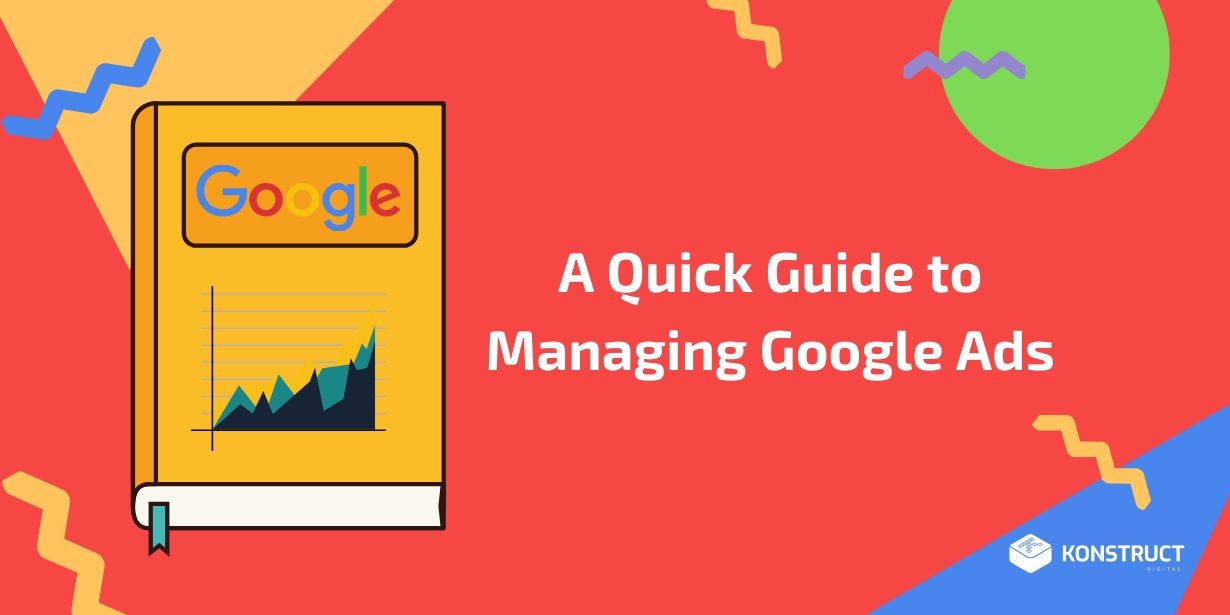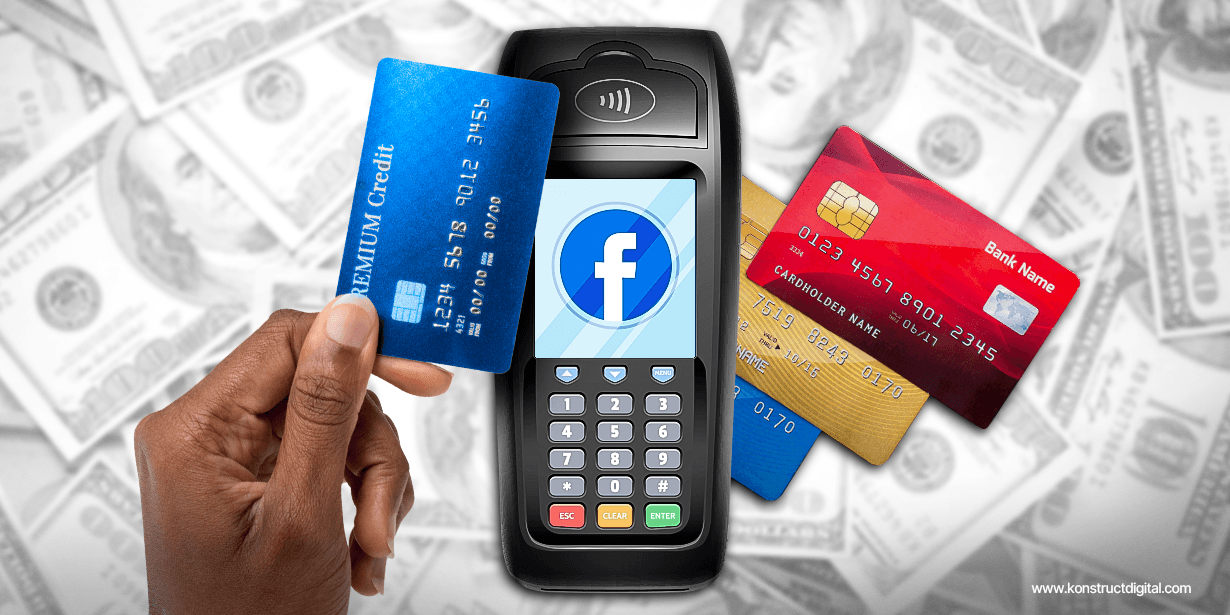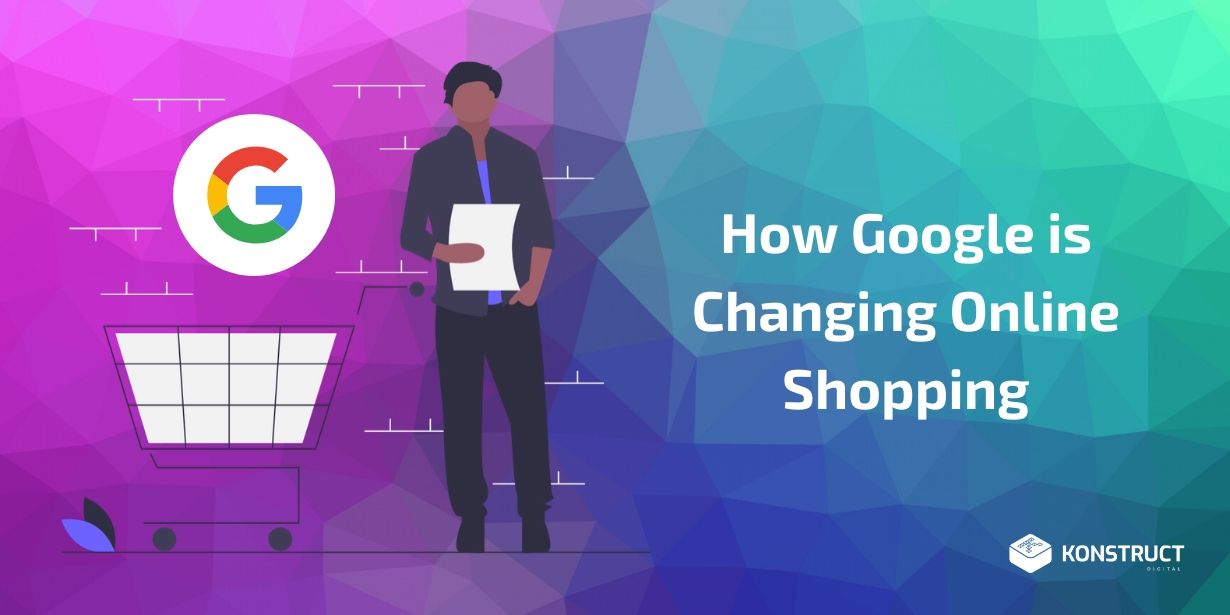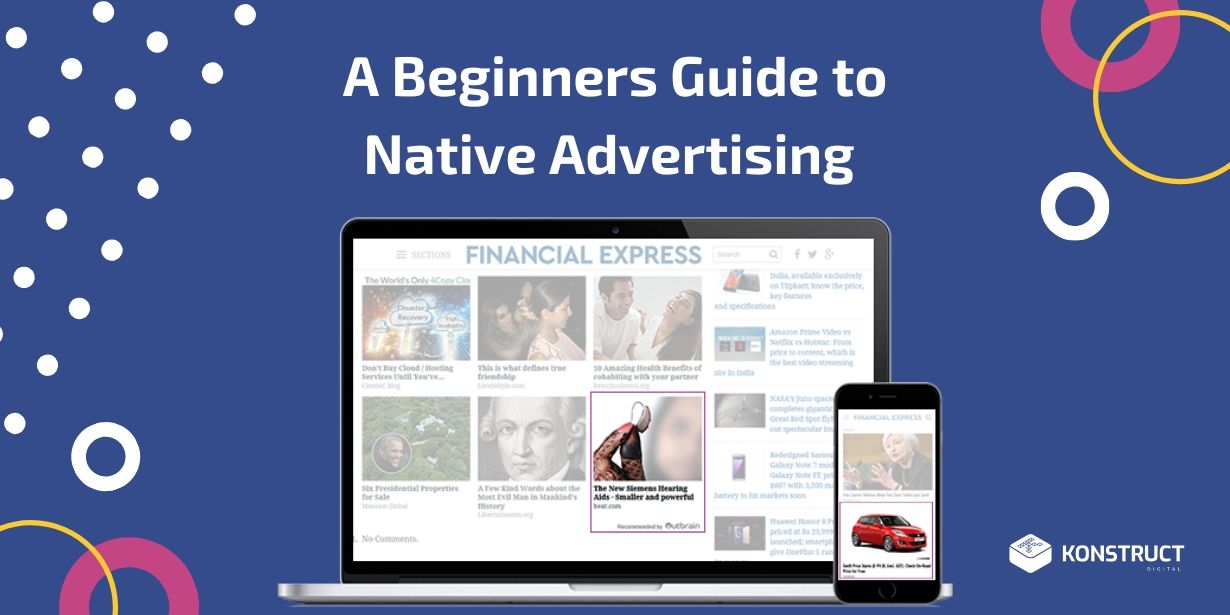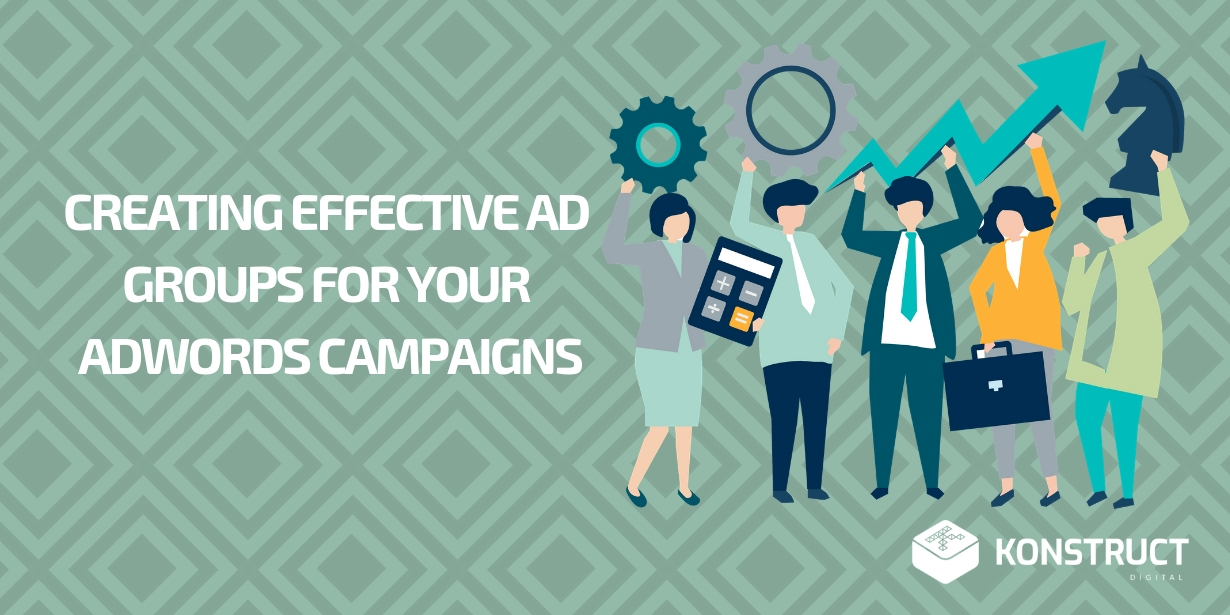What are Native Ads?
Let me introduce you to the chameleon of digital marketing: native advertising. The definition of native advertising is a type of paid content that is designed to integrate seamlessly into the platform they appear on. While you may not have noticed native ads, I guarantee you will have encountered them.
Native marketing has a long and proud history, starting in print media as so-called ‘advertorials’. In this type of native ad, if the brand name is removed, the ad would feel like any other piece of content in the newspaper. Done well, this is exactly the forte of native ads – the ad blends in with the content on the site or platform and has a softer selling approach compared to other forms of advertising – so much that it often can be mistaken for organic content. Because they are designed to blend in, they also don’t interrupt the reader’s flow or annoy the user right off the bat.
Native ads can be used anywhere and can take the form of articles, videos or images. Here are some examples of native advertising:
Search Engine Result Ads
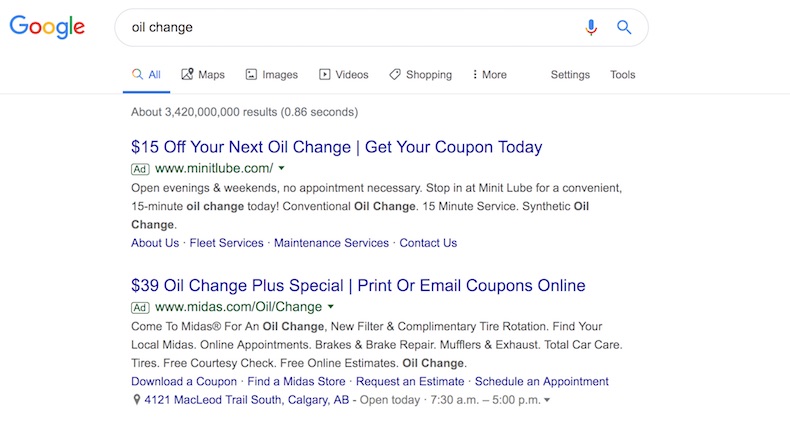
Sponsored Social Media Posts
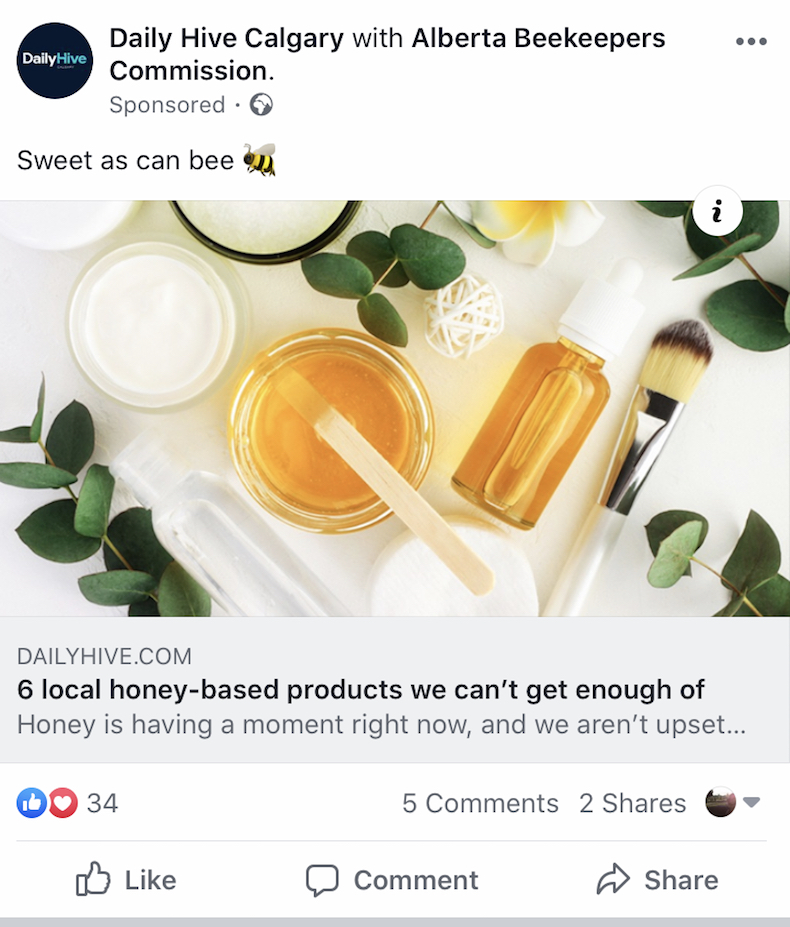
Sponsored Snippets Next to an Article
These often show up in a column labeled “recommended from the web”, “sponsored content”, or something similar
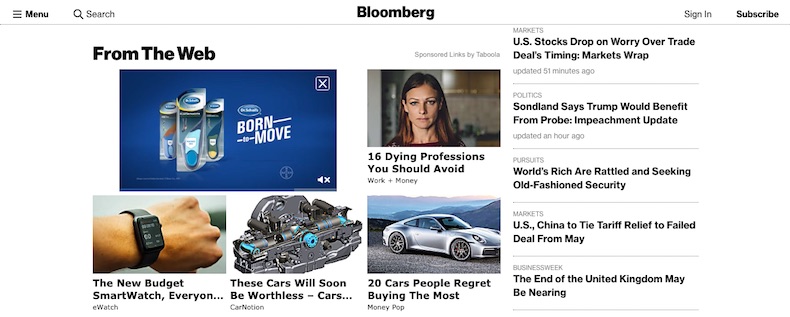
Advertorials that Feature a Full Article Related to Your Product or Service

Why use Native Ads?

Native advertising is rapidly growing in popularity and for good reason, as it is both effective and appealing.
If you’re wondering how effective native ads are compared to traditional display advertising, the stats speak for themselves.
- Native ads generate click-through-rates (CTR) that are almost 9 times higher than display ads (Deloitte report).
- Native ads get 53% more views than display ads (Acquisio).
- Native ads get an 18% higher purchase intent and 9% higher brand affinity than display ads (Sharethrough).
Native ads are effective because they let you tap into content-driven advertising. The appeal is that they are embedded in a medium your target audience already uses and therefore appear more relevant. Also, native ads allow you to tell a story about your product or business, which engages users, as 70% of consumers prefer to learn about products via content rather than advertising (Ignite Visibility).
Also, let’s face it: users are getting increasingly sick of ads. In fact, according to a Deloitte report, 80% of North Americans use some form of adblocking. Native ads are a way to reach users suffering from ‘ad fatigue’, and most native ads will not be hidden by ad blockers.
Native Ads vs Display Ads
Now, let’s talk about how to use the right tool at the right time. What’s the difference between display ads and native ads, which type of ad should you use for your business? Let’s break it down.
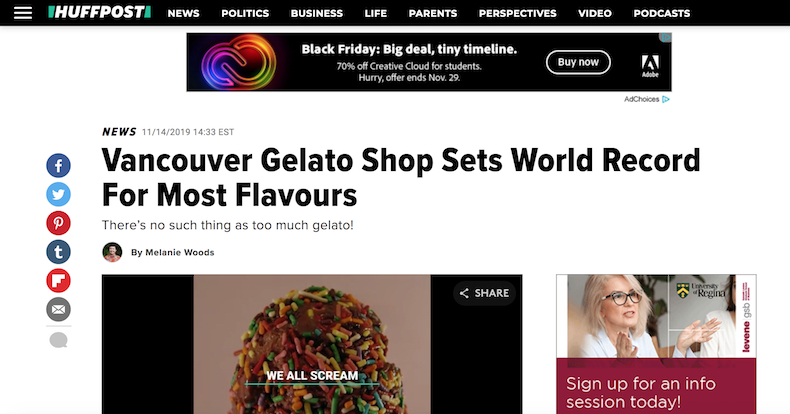
Display ads show up next to original content in the form of banner ads, typically with the brand’s logo. While display ads aren’t as engaging as native ads, they are still a good way to build brand awareness and test and optimize for better performance. Here’s when you should use display ads:
- A display ad is your best option if you’re trying to reach multiple audiences at the same time that don’t behave the same way online and don’t consume content on the same publishing platforms, mediums, sites or apps.
- Your target audience uses sites that don’t have consistent format, content and editorial styles, which makes it tricky for a native ad to seamlessly blend into.
- You want to use ad networks to quickly and easily place ads on many different sites.
- The main goal of your campaign is remarketing, where you’re targeting ads only to people who have visited your site before.
If a display ads campaign is a good fit for your marketing needs, we have a handy guide on how to get started.
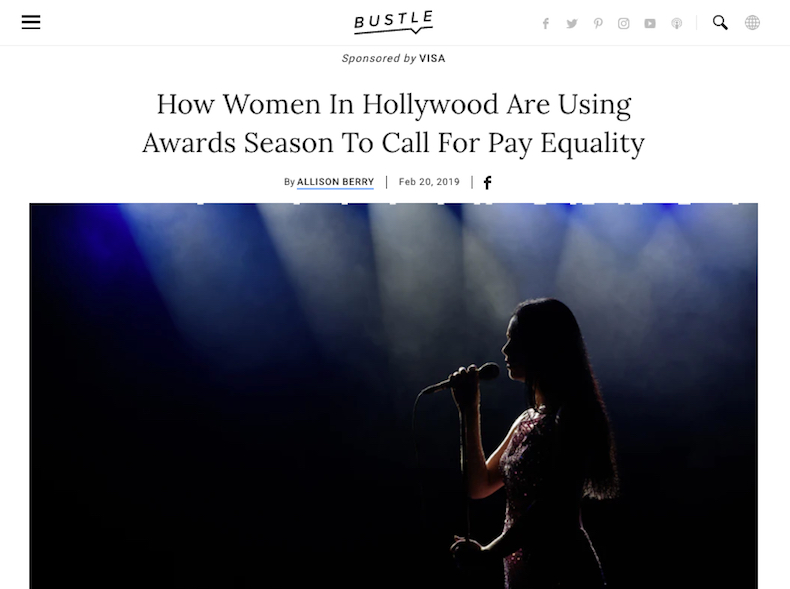
Native ads are a great way of telling a story about your business or product. Here’s when using native ads is a good fit:
- Your target audience can be reached through a small number of similar sites with a consistent editorial style, format, and content type, so one native ad can reach all audience members.
- You want to invest in a clever and creative marketing campaign that is more likely to grab the attention of your target audience.
- Part of your marketing strategy is to boost brand loyalty.
- You want your target audience to share your content with their connections.
Native Advertising Platforms

Great! Now that we have the basics of native ads down, let’s have a look at what native advertising platforms are available.
Search Engines
You can place a native ad directly with search engines, so your ad shows up with relevant search results, depending on the user query. The main provider is, of course, Google, but there are also other options such as Bing, Yahoo, and Yelp.
Social Media Platforms
You can also place an in-feed native ad with social media platforms such as Facebook, Instagram, and Twitter.
Ad Networks
Ad networks such as Taboola, Outbrain, and Nativo are third-party platforms that connect advertisers with publishers. Via these networks, you can place a native ad across a wide range of publishers from BuzzFeed and The HuffPost to ESPN and Bloomberg.
How to Build a Native Ad
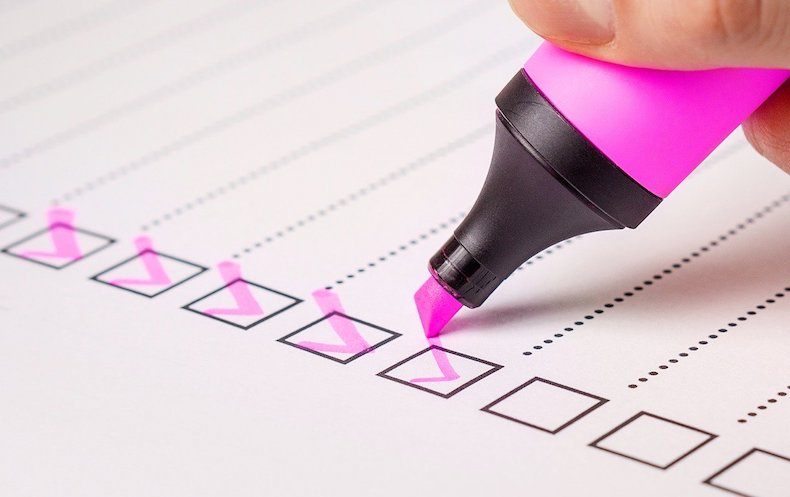
To create a native ad, here are a couple of steps to get you started.
- Ask yourself, who is your target audience? It’s important to have a good idea of the specific demographic characteristics such as location, device, age, gender, and interests. Once you get the initial results of your native ads campaign, you should assess your target audience profile and define it even further.
- Based on your target audience and your budget, define which native advertising platform works best for your campaign.
- Decide on your marketing goal and craft copy that matches the chosen platform and speaks to your audience’s interests.
- Decide on your budget. The cost of native ads varies widely depending on the type of native ad, the platform, and your industry.
Native Advertising Best Practices

Finally, let’s go through some best practices for creating a native ad that succeeds.
- Include a clear call-to-action. Don’t leave your audience wondering what you’re trying to communicate.
- Match the style of the platform it’s viewed on. The content should appeal to and resonate with the users of the platform in order to be engaging.
- Choose effective images to go with your content. Taboola, one of the major native ads networks, did a thorough review of the efficiency of different types of images and found that photos work 20% better than illustrations, outdoor shots perform 12% better, and black and white images are generally more engaging.
- Make sure your native ad is appropriately labeled (sponsored, promoted, etc) for transparency. Although there are no rules regarding how publishers should label native ads, don’t breach the trust between the publisher and their audience by being misleading or deceptive.
- In addition to labeling, be clear in your copy that the native ad is sponsored by a brand. While native ads are designed to blend in with the rest of the content on the platform, you want to strike a balance between mimicking organic content and transparency. It’s a hard balance to strike, as 48% of users have felt deceived upon realizing that the content is sponsored by a brand (Ignite Visibility).
Start Your Native Advertising Campaign… Now!
Based on an eMarketer forecast, by the end of 2020, advertisers will spend almost two-thirds of their display budgets on native ads. You should probably get in the game too! The best native ads are the MVPs of a company’s digital marketing strategy, and can really help you reach your marketing goals.
If you’re wondering how a native ad campaign would look like for your business or how to better manage your native ad campaign, let us help! Here at Konstruct, we have years of experience helping all types of businesses build a digital marketing strategy that will deliver the results they’re looking for.



